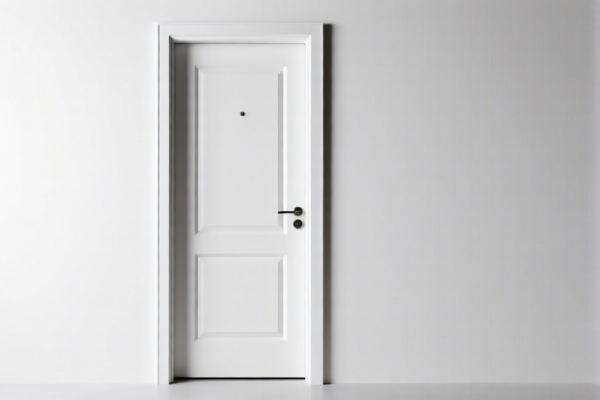| HS Code | Official Doc | Tariff Rate | Origin | Destination | Effective Date |
|---|---|---|---|---|---|
| 3926903300 | Doc | 36.5% | CN | US | 2025-05-12 |
| 3923900080 | Doc | 58.0% | CN | US | 2025-05-12 |
| 4205000500 | Doc | 57.9% | CN | US | 2025-05-12 |
| 4205004000 | Doc | 56.8% | CN | US | 2025-05-12 |




Door Organizer
A door organizer is a storage solution designed to maximize space by utilizing the often-underused surface of a door. These organizers typically hang over standard doors and provide various compartments and pockets for storing a range of items.
Materials
Common materials used in door organizer construction include:
- Fabric: Often polyester, nylon, or canvas. These are lightweight, affordable, and available in numerous colors and patterns.
- Metal: Hooks and frames are frequently made from steel or aluminum for durability and support.
- Plastic: Used for pockets, frames, or reinforcement, offering water resistance and ease of cleaning.
- Wood: Less common, but utilized in higher-end or decorative organizers, providing a more substantial look and feel.
Purpose & Function
The primary purpose of a door organizer is to increase storage capacity, particularly in small spaces. They function by:
- Vertical Storage: Utilizing the vertical space of the door instead of floor or shelf space.
- Compartmentalization: Offering pockets, shelves, or compartments to categorize and separate items.
- Accessibility: Providing easy access to stored items without needing to open cabinets or drawers.
Usage Scenarios
Door organizers are versatile and can be used in various locations and for diverse storage needs:
- Bedrooms: Storing shoes, accessories, toiletries, or cleaning supplies.
- Bathrooms: Holding toiletries, hair accessories, or cleaning products.
- Pantries: Organizing spices, snacks, or cleaning agents.
- Closets: Maximizing closet space by storing accessories, belts, or small clothing items.
- Laundry Rooms: Storing detergents, fabric softeners, or cleaning tools.
- Dorm Rooms: Providing compact storage solutions for limited living spaces.
Common Types
Several types of door organizers cater to specific needs:
- Over-the-Door Shoe Organizer: Designed specifically for storing shoes, typically with multiple pockets.
- Over-the-Door Hanging Organizer: A general-purpose organizer with various pocket sizes and configurations for diverse items.
- Over-the-Door Hook Organizer: Features hooks for hanging items like coats, bags, or towels.
- Adjustable Over-the-Door Organizer: Allows for customization of pocket sizes or configurations to accommodate different items.
- Rolling Door Organizer: Combines the benefits of a door organizer with wheels for easy mobility.
- Clear Pocket Organizer: Uses transparent pockets for easy visibility of stored items.
Based on the provided information, classifying "door organizer" requires careful consideration of its material and function. Here's a breakdown of potentially relevant HS codes:
- 3926903300: This code covers “Other articles of plastics and articles of other materials of headings 3901 to 3914: Other: Beads, bugles and spangles, not strung (except temporarily) and not set; articles thereof, not elsewhere specified or included: Handbags”. If the door organizer is constructed primarily of plastics and resembles a bag-like structure for holding items, this code might be applicable. The total tax rate is 36.5%, comprising a 6.5% base tariff, 0.0% additional tariff, and a 30.0% additional tariff effective April 2, 2025.
- 3923900080: This code applies to “Articles for the conveyance or packing of goods, of plastics; stoppers, lids, caps and other closures, of plastics: Other Other”. If the door organizer functions as a container for storing or conveying items, and is made of plastic, this code could be considered. The total tax rate is 58.0%, consisting of a 3.0% base tariff, a 25.0% additional tariff, and a 30.0% additional tariff effective April 2, 2025.
- 4205000500: This code covers “Other articles of leather or of composition leather: Of a kind used in machinery or mechanical appliances or for other technical uses: Belting leather cut or wholly or partly manufactured into forms or shapes suitable for conversion into belting”. If the door organizer incorporates leather components used for structural support or attachment, this code may be relevant. The total tax rate is 57.9%, including a 2.9% base tariff, a 25.0% additional tariff, and a 30.0% additional tariff effective April 2, 2025.
- 4205004000: This code applies to “Other articles of leather or of composition leather: Other: Straps and strops”. If the door organizer primarily consists of leather straps or components used for hanging or securing items, this code could be applicable. The total tax rate is 56.8%, comprising a 1.8% base tariff, a 25.0% additional tariff, and a 30.0% additional tariff effective April 2, 2025.
According to the provided reference material, the HS code options related to 'door organizer' are limited, with only the following 4 found.
It is important to determine the primary material and function of the door organizer to select the most accurate HS code. If the organizer is made of plastic and functions as a container, 3923900080 or 3926903300 might be suitable. If it incorporates leather components, 4205000500 or 4205004000 should be considered.
Customer Reviews
No reviews yet.